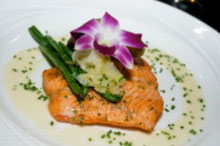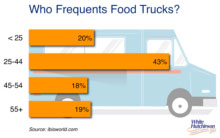
Vol. XIV, No. 9, October 2014
- Editor's corner
- Will laser tag overtake bowling as the #1 attraction?
- Food is the new status symbol; does your center qualify?
- Foundations Entertainment University 2015 dates
- One-of-a-kind survey of FEC attraction preferences
- Video game play and entertainment goes mobile
- Agritainment owns October
- Learn about brand ambassadors from the State Department
- The hybrids are coming
Food is the new status symbol; does your center qualify?

A decade ago in the days of conspicuous consumption, shoes, watches, clothes, handbags and other material goods were status symbols. Today, there is a major cultural shift underway, especially for Millennials, of what people want to show off to attain status. It is no longer stuff, but rather experiences. And among those experiences that they share via social media, the most common is food. Young consumers are sharing photos of extravagant looking plates of food, perfectly frosted donuts, a box of fancy cookies against the backdrop of some exotic location and glasses with drinks. 44% of Millennials have posted a photo of food or drinks on social media. Some commentators have even described the trend as camera cuisine. This obsession with food is no surprise considering the popularity of celebrity chefs, the plethora of television and YouTube cooking shows, food festivals and the growing number food trucks.
This also hints at a luxury shift from owning stuff to experiences. And food is becoming the new status symbol. Today, sharing a photo of some exotic dish or unique food is the equivalent of announcing, “I'm so fancy. I've enjoyed something special,” and inviting social envy the way a nice handbag or piece of jewelry would have been a decade ago.

Food is an experience and a very communal social one. When young adults share photos of the food and drink they experience at some venue, the photo becomes evidence of the larger event experience with other people they want people to know they participated in. The act of sharing a picture of a plate of food at a restaurant or other venue, the dish from a food truck or a picture of a cronut is much less overt and ostentatious than broadcasting an image of an expensive product. An aspirational lifestyle now includes the opportunity to enjoy and share via social media indulgent, unique enviable foods. In fact, when it comes to out-of-home experiences, 52% of Millennials 21-32 years old would rather go to a food festival than a music festival.
This cultural shift to experiences with food is fast leaving behind the large majority of entertainment venues. Yes, they offer entertainment experiences, but you won't see many photos of bowling or playing games in an arcade being shared on Instagram, Pinterest, Facebook and other social media, but you sure will see a lot of restaurant food and drink photos being posted.
The issue is that most entertainment venues only classify their attractions as the entertainment ones, when in fact food and beverage needs to be understood as a major anchor attraction. Many of the most successful community-based LBEs generate half or more of their revenues from the food and beverage, not from the entertainment. Without what we call destination food and beverage, offerings that bring guests, often more so than the entertainment, most entertainment centers lack the cachet to attract today's consumers, especially the younger generations who define who they are by the food venues they visit, the food they eat and the food experiences they brag about to their friends.
Vol. XIV, No. 9, October 2014
- Editor's corner
- Will laser tag overtake bowling as the #1 attraction?
- Food is the new status symbol; does your center qualify?
- Foundations Entertainment University 2015 dates
- One-of-a-kind survey of FEC attraction preferences
- Video game play and entertainment goes mobile
- Agritainment owns October
- Learn about brand ambassadors from the State Department
- The hybrids are coming


